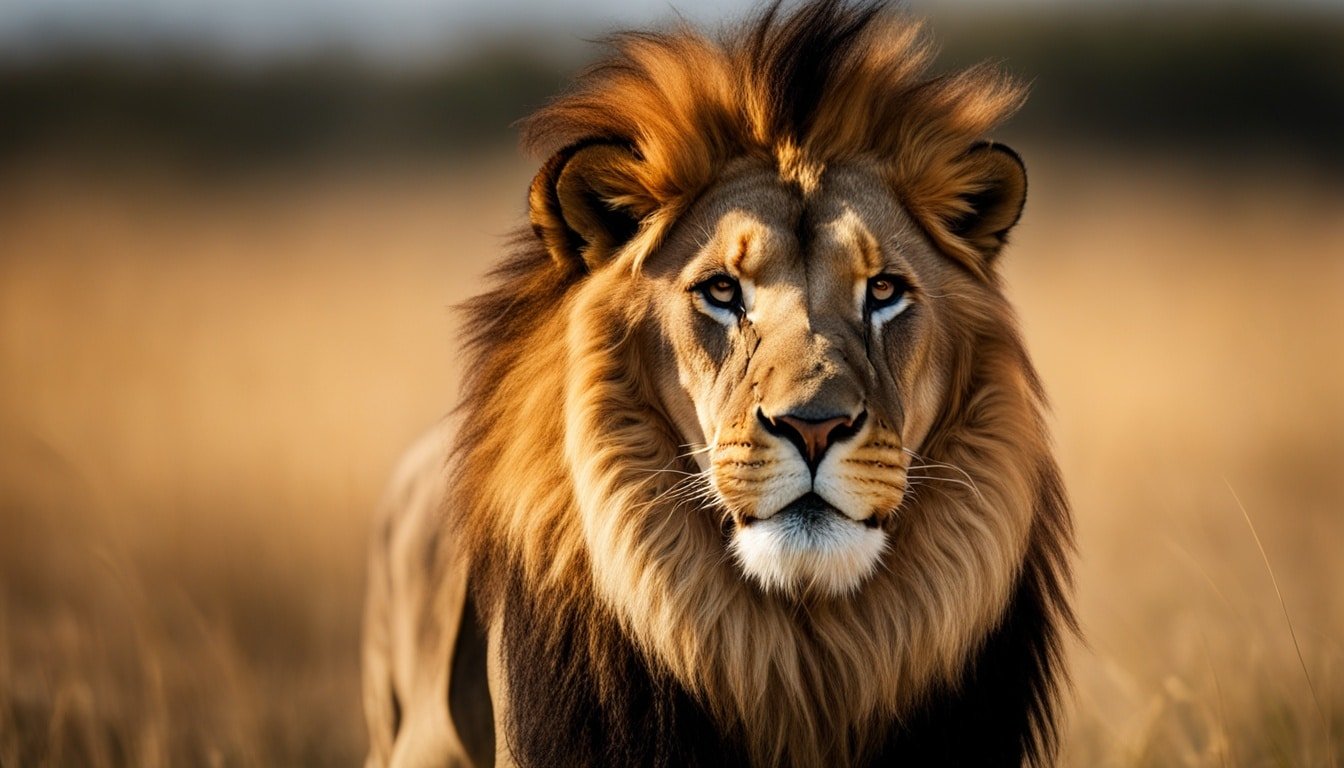Wildlife photography is a rewarding hobby that requires time and dedication. There are many tips and tricks online that help both beginners and experts. This article shares top tips to improve your skills in animal wildlife photography. It focuses on key techniques and strategies for capturing beautiful images of wild animals in their natural settings.
Key Takeaways
- Develop patience and observe your subjects closely to capture the perfect shot.
- Master your camera equipment and understand its capabilities to make the most of your gear.
- Utilize various lenses and composition techniques to create impactful wildlife images.
- Experiment with different lighting conditions and master the art of lighting in wildlife photography.
- Explore beyond the common wildlife subjects and discover the weird and wonderful creatures of nature.
Also Read : What Are Some Simple Ways To Support Wildlife?
Patience is Crucial in Animal Wildlife Photography
Patience is key when you want to capture wildlife through your camera. Wild animals don’t follow your plan – they have their own schedule. To get the perfect shot, you must wait patiently for the right moment.
Also Read : Why Is Animal Protection Important?
Observe and Study Your Subjects
Spending time with your animal subjects helps you understand their behaviors and personalities. This knowledge lets you wait for the best photography moments. Patience and keen observation are essential for capturing natural-looking wildlife shots.
Be Prepared to Wait for the Perfect Shot
Wildlife photography takes a lot of patience and waiting. You might spend hours or days watching your subjects before getting the perfect shot. But the effort pays off, making your wildlife photography skills better. Remember, good things come to those who wait.
Also Read : How Does Social Media impact Political Opinion?
“Patience is not simply the ability to wait – it’s how we behave while we’re waiting.” – Joyce Meyer
Master Your Camera Equipment
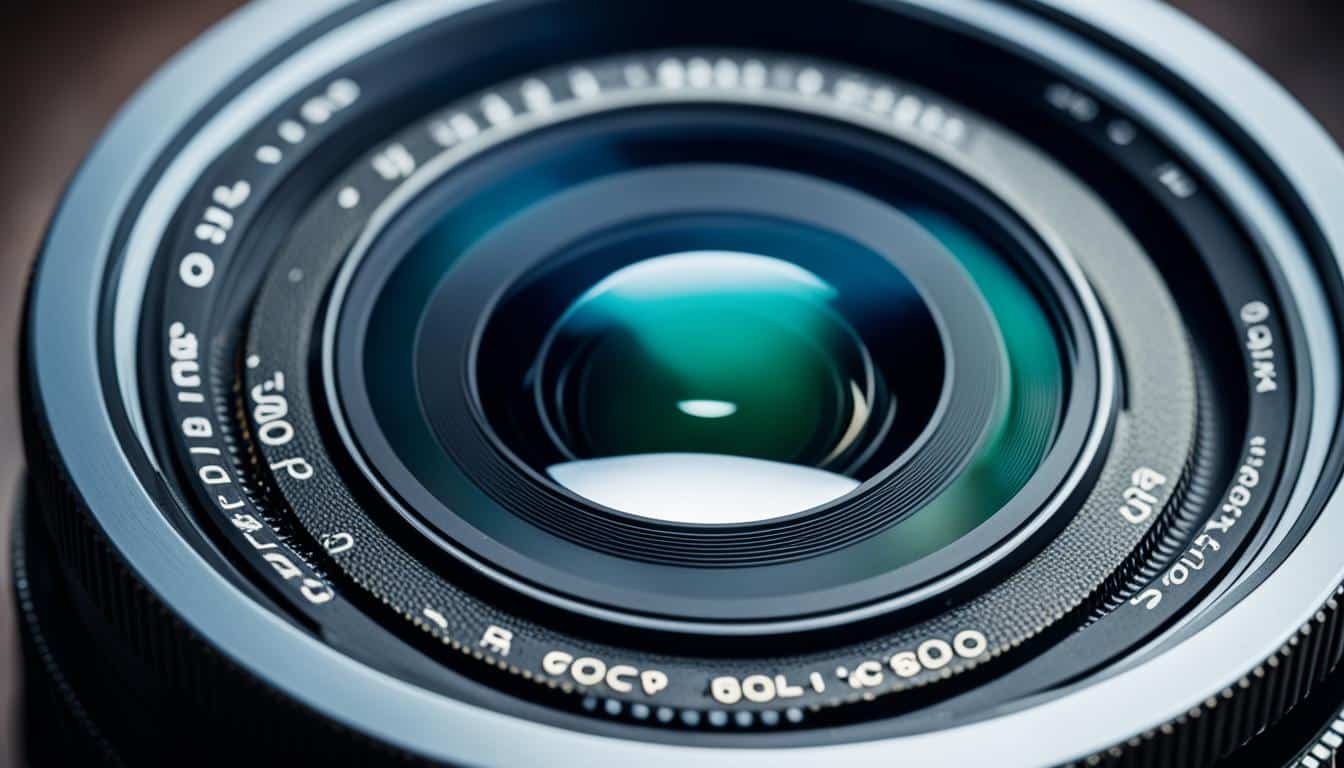
For wildlife photographers, knowing your camera equipment is key. Your camera should feel like a part of you, letting you adjust settings quickly. Experts say it’s crucial to get to know your camera’s features and how it works before you start shooting.
Also Read : What Are The Common Fever Symptoms?
Know Your Camera Inside and Out
Not knowing your camera can mean missing great shots. Spend time learning about your camera’s settings, buttons, and what they do. Get to know your camera so well that you can change settings instantly, keeping your eyes on your subject.
- Learn all the features and capabilities of your camera
- Understand how to quickly adjust camera settings like aperture, shutter speed, and ISO
- Practice changing settings rapidly to become proficient
- Treat your camera as an extension of your own body and mind
Knowing your camera inside and out lets you adjust settings quickly. This way, you won’t miss those special wildlife moments. Your camera should be like a natural part of you, making it easy to take amazing photos.
Also Read : What Is The Public Opinion On Robotics Technology?
“Your camera needs to be an extension of yourself – you should be able to change settings rapidly, even with your eyes closed.”
Zoom is Not Always Better
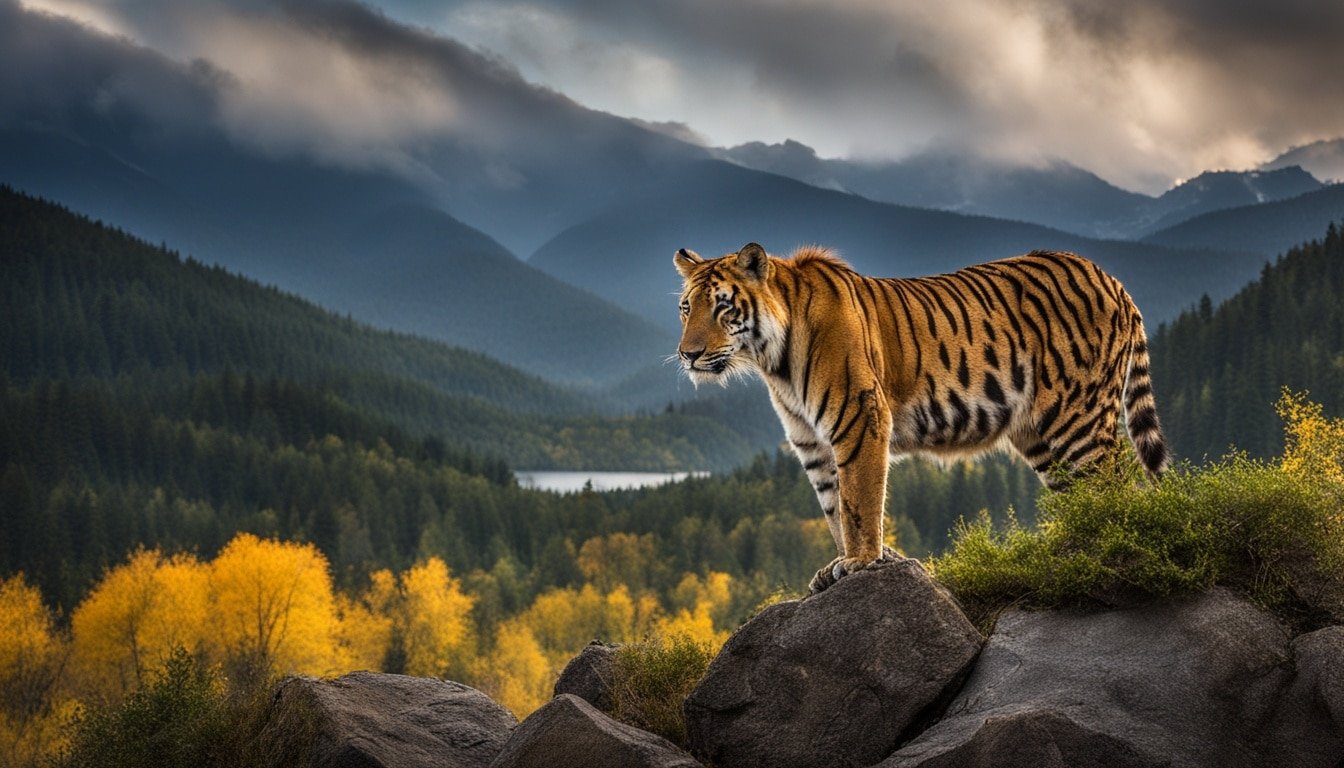
In wildlife photography, many beginners think they must zoom in as close as possible. Getting up close is good for capturing details. But, shooting from a wider angle can also lead to unique and compelling shots.
Capture Environmental Context
Adding the animal’s surrounding environment makes the image more contextual and natural. By looking at the wider scene, you show the subject in its natural habitat. This gives a more immersive and informative shot for the viewer.
Consider Using Wider Lenses
Don’t just stick to telephoto zooms. Try using wider lenses for a unique and signature style. These lenses let you fill the frame with your subject and still see the surroundings. This can make your wildlife photographs more creative and dynamic.
“The key to great wildlife photography is not just capturing the animal, but also the environmental context in which it exists.”
Mastering Lighting Techniques
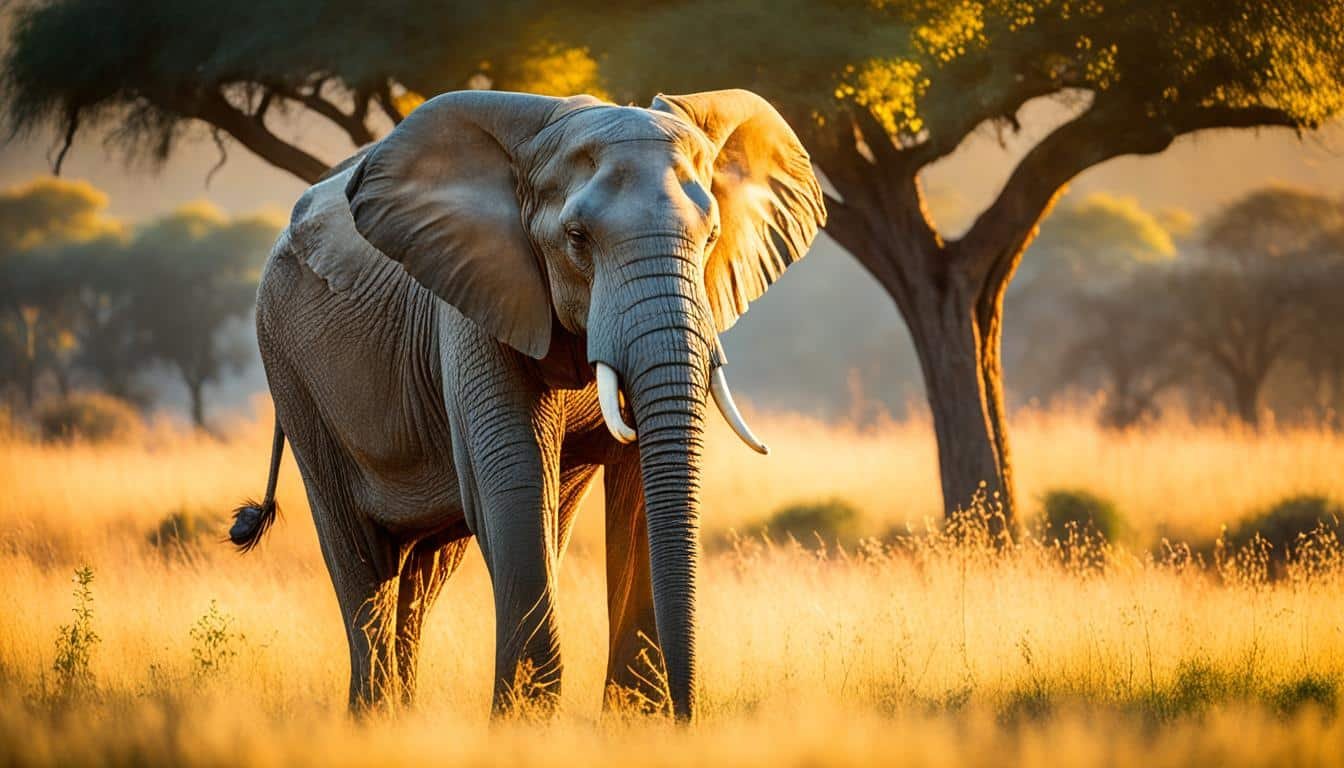
Lighting is key in wildlife photography. The “golden hour” at dawn and dusk gives a soft, flattering light. This light is often better than the harsh midday sun. Overcast skies also offer even lighting that reduces glare and shadows.
Photographers should think about the lighting and use techniques like backlighting. Backlighting can show off an animal’s fur or feathers. It also creates dramatic silhouettes and sun flares, adding depth to the photo.
| Lighting Condition | Advantages | Challenges |
|---|---|---|
| Golden Hour | Soft, flattering light | Limited window of time |
| Overcast | Even, diffused lighting | Lack of contrast and drama |
| Midday Sun | High-contrast, dramatic lighting | Harsh shadows and glare |
Learning about lighting can make wildlife photos better. It helps capture the beauty and essence of subjects. Whether it’s the golden hour’s warm glow or backlighting’s silhouettes.
“The quality of light can make or break a photograph. As a wildlife photographer, understanding and manipulating light is essential to creating stunning, impactful images.”
Go Beyond the Popular Animals
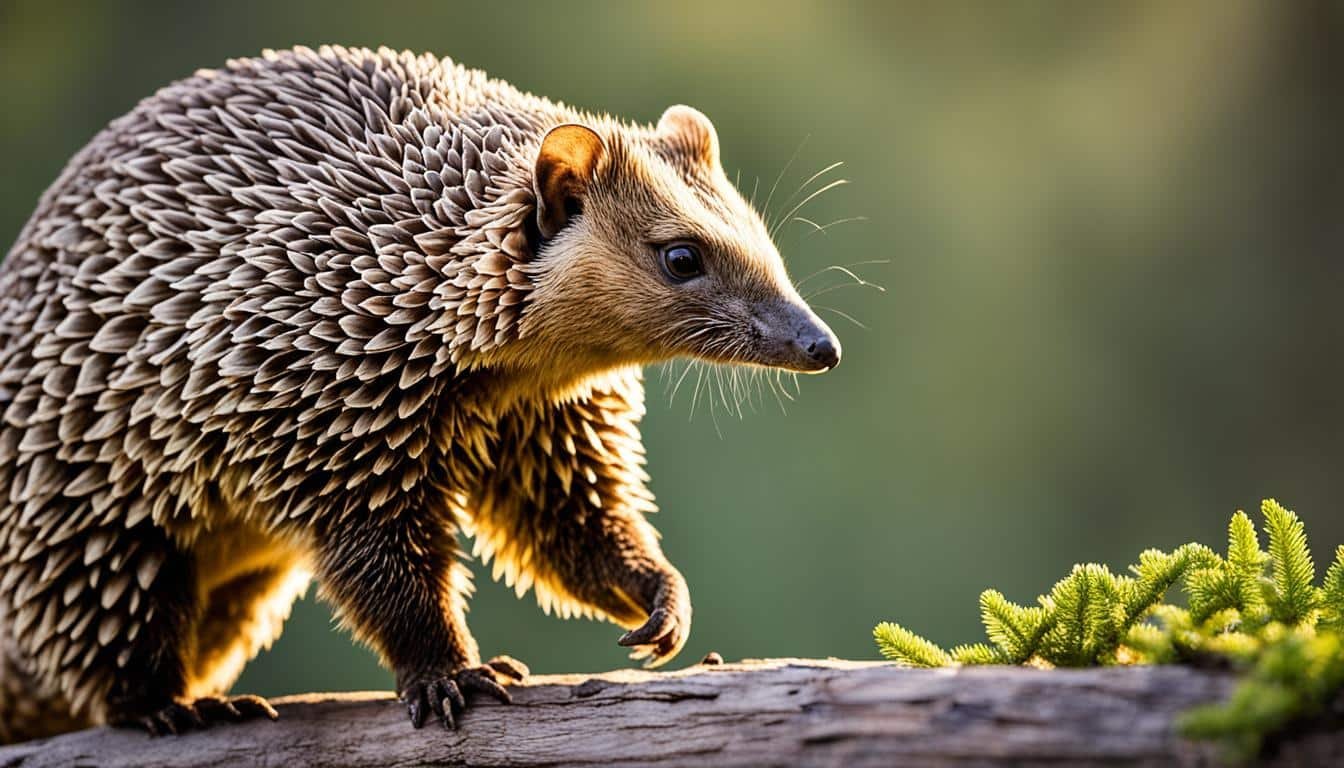
Many wildlife photographers focus on the big names like the “Big Five.” But there’s a world full of weird, wonderful, and fascinating animals waiting to be captured. By looking beyond the usual, you can find subjects with unique traits that make your photos stand out.
Explore the Weird and Wonderful
Looking beyond the usual can lead to unique and memorable shots. Creatures like the odd platypus and the amazing chameleon show us the beauty in small things. These small creatures have a big presence and unique character. Focusing on them can give you a fresh view in wildlife photography.
“The most beautiful thing in the world is, of course, the world itself.”
– Wallace Stevens, American Poet
Try going beyond the big five and discover the hidden gems of nature. You’ll be amazed by the unique character and big presence of small creatures. These interesting animals and wonderful animals will make your wildlife photography even more special.
Preparation is Key
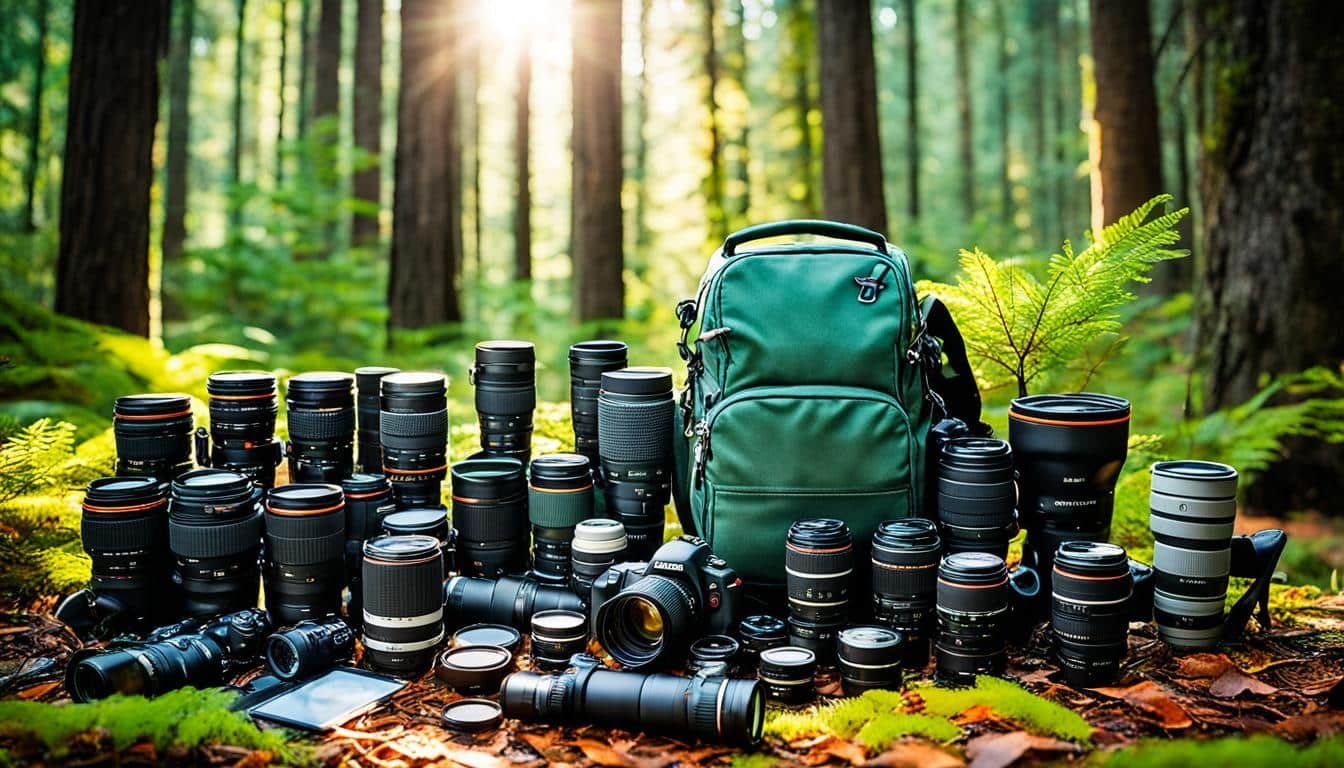
To get amazing wildlife photos, you need to be well-prepared. Start by doing deep research on the animals you want to photograph. Learn about their behavior, routines, and how they move. This info helps set your camera right and know when to snap the shot.
Research Your Subjects
Spending time to learn about your animals can really pay off. Find out where they live, what they eat, and how they act. Know their movements and routines to guess when and where they’ll show up. This prep work means you’ll be in the perfect spot to catch those amazing wildlife moments.
Pack the Right Gear
- Bring a versatile telephoto lens for clear shots from far away.
- Have a wider lens for photos that show the animal in its environment.
- Use a tripod or monopod to keep your camera steady and sharp.
- Don’t forget weather protection gear, as the weather can change fast and affect your photos.
With good preparation and the right gear, you’re set to take stunning wildlife photographs that tell a great story.
Composition and Focus
Creating great wildlife photos needs a sharp eye for composition and focus. Use the Rule of Thirds to make your shots better. Shooting from eye level or a low angle can make your photos more exciting.
It’s important to have the animal’s eyes in sharp focus. Use autofocus modes like One Shot mode or Continuous AF. Make sure your framing is right and adjust as needed. Adding a catch light in the eyes makes your portraits stand out.
Try Aperture Priority mode with a wide aperture. This isolates your subject and blurs the background. Your animal will be the main focus of a striking image.
Utilize Compositional Guidelines
- Apply the Rule of Thirds to create a well-balanced frame
- Get down to eye level with your subjects for a more impactful perspective
- Consider shooting from a lower angle to add drama and depth to your images
Nail the Focus on the Eyes
- Use autofocus techniques like One Shot mode or Continuous AF to ensure sharp focus
- Carefully frame and recompose your shot to keep the eyes in focus
- Add a catch light in the eyes to enhance the impact of your wildlife portraits
“The eyes are the windows to the soul, and in wildlife photography, they are the key to capturing the essence of your subject.”
Practice and Perseverance
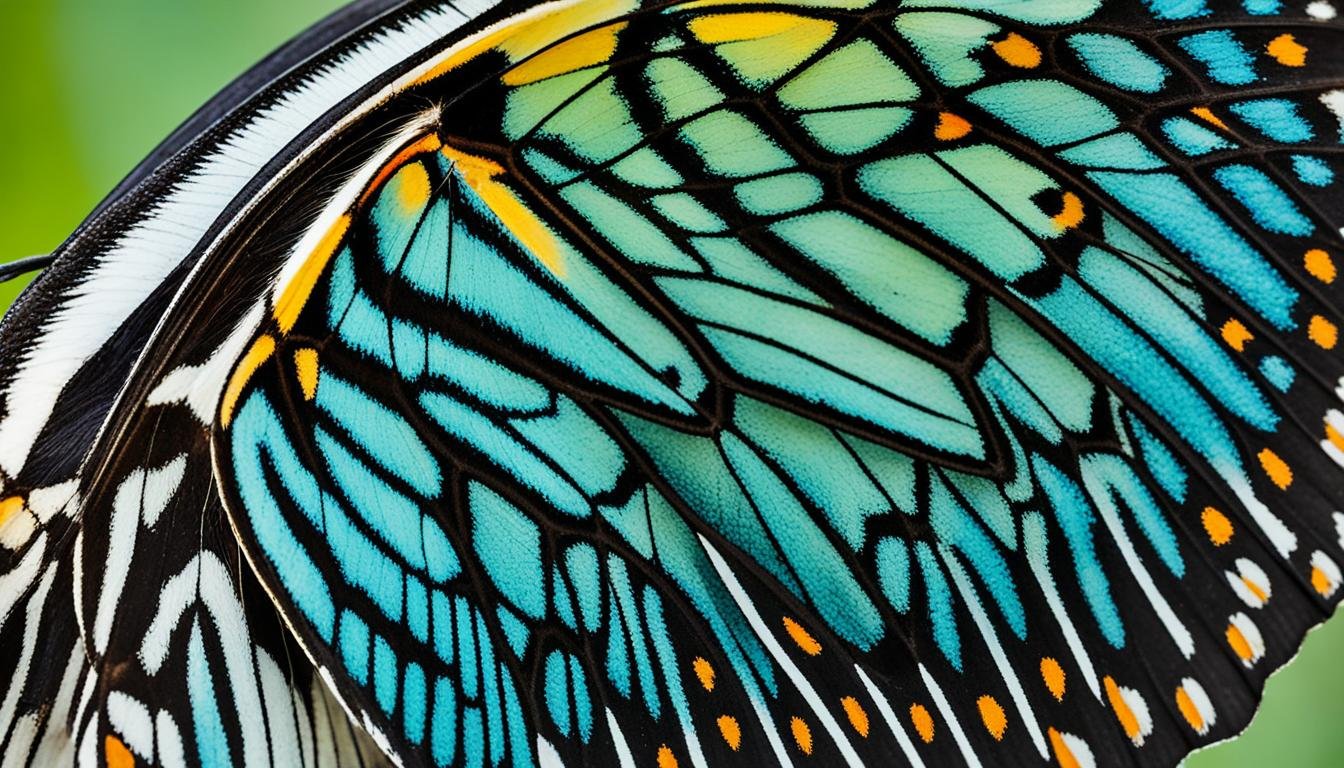
Consistent practice and perseverance are key to getting better at wildlife photography. Being patient and observant can lead to great surprises.
Begin by practicing in local public parks or gardens. Here, you can photograph wildlife like birds, deer, and even spiders, beetles, and flies. These places are perfect for improving your skills and patience.
The path to becoming a great wildlife photographer is long. Keep learning, growing, and let your love for nature push you forward. With practice and perseverance, you’ll capture the amazing in everyday moments. This will broaden your photography skills and deepen your love for nature.
Develop a Passion for Nature
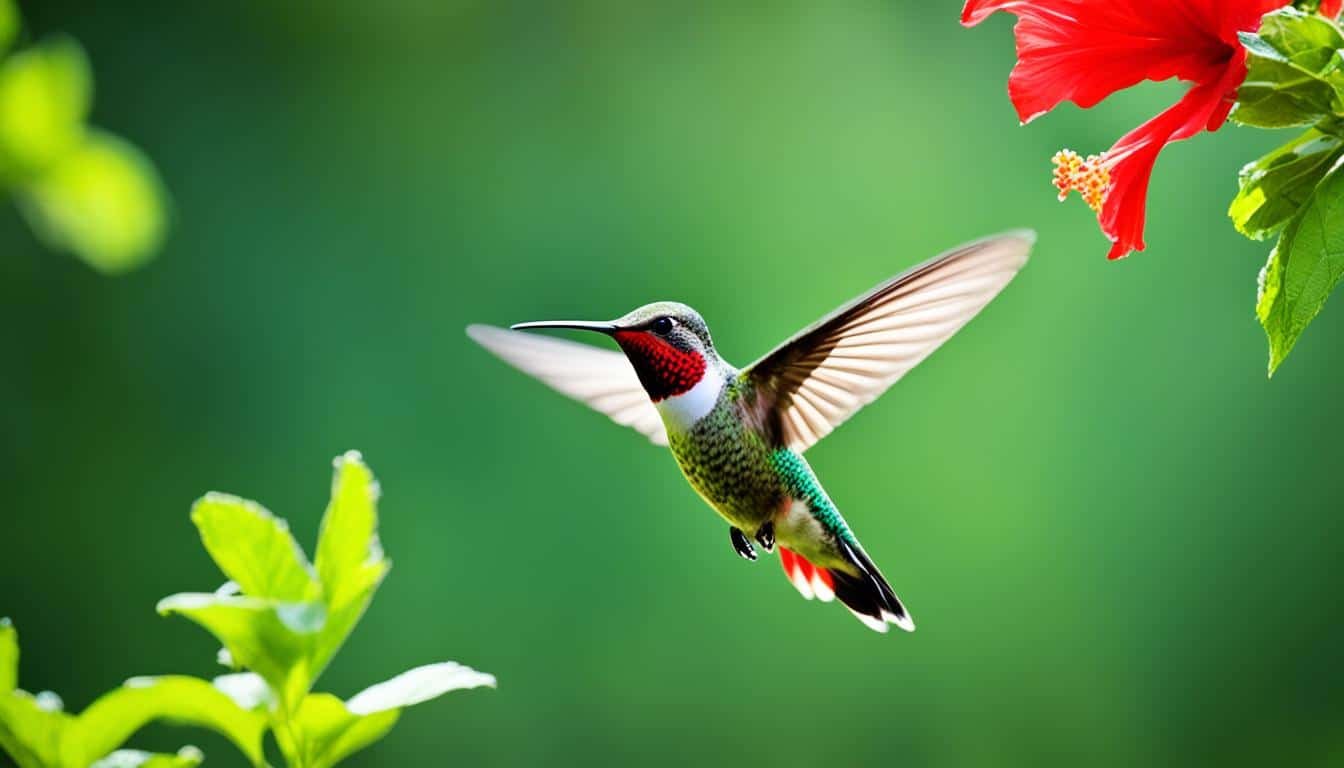
To be great at wildlife photography, you need a real passion for the natural world. Getting into macro photography or changing your garden wildlife can deepen your understanding of nature’s beauty.
It’s key to respect wildlife and their homes. Don’t disturb animals or risk your safety to get photos. This respect makes you a better wildlife photographer and a caring environmentalist.
Appreciate Wildlife in All Forms
Every living thing, from big animals to garden wildlife, deserves our respect. By exploring the weird and wonderful of nature, you’ll gain a deeper love for our wildlife friendly world.
Things like a pond full of life or a wildflower patch with bees can inspire you. By slowing down and really appreciating wildlife, you’ll learn patience and detail. These skills are key for amazing macro photography shots.
“The love of nature is the first step in understanding the importance of respecting wildlife and protecting our planet.”
Animal Wildlife Photography
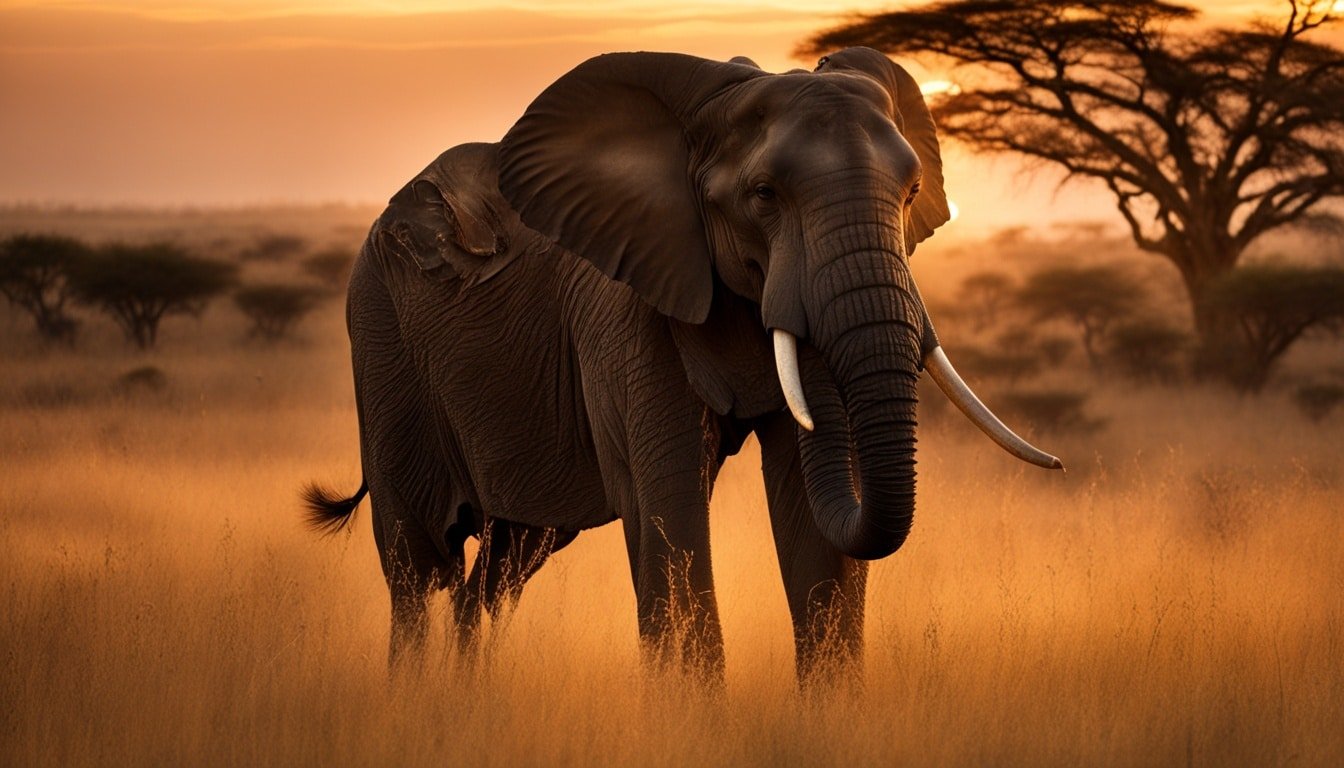
Capturing the essence of the natural world through animal wildlife photography is both captivating and rewarding. It requires special skills and techniques to document the beauty and diversity of our planet’s creatures focal length nature photographers animals live sharpness elephant wide open cub.
Whether you’re a pro or just starting, mastering animal wildlife photography can boost your skills. It lets you create stunning images that truly capture your subjects’ spirits. This guide will give you tips and strategies to improve your wildlife photography.
The Importance of Patience
Successful animal wildlife photography is all about patience and perseverance. Wildlife can be unpredictable, so you must be ready to wait and observe their natural behaviors. With a keen eye for detail and a love for nature, you can catch the perfect moment.
Mastering Your Camera Equipment
To do well in animal wildlife photography, know your camera inside out. Learn about its technical settings and how to use them. This will help you adapt to different situations and get the best shots. Try out different lenses, apertures, and shutter speeds to find what works best for you.
Capturing the Essence of the Natural Habitat
Close-up shots are great, but don’t forget about the animal’s natural habitat. Including the environment in your photos makes them more engaging. Use wide-angle lenses to show the landscape and the animal’s role in its ecosystem.
| Technique | Description | Benefits |
|---|---|---|
| Patience and Observation | Waiting patiently and carefully observing your subjects to anticipate the perfect moment | Allows you to capture the natural behaviors and unique moments that truly showcase the subject |
| Mastering Camera Equipment | Thoroughly understanding the technical capabilities of your camera and lenses | Enables you to adapt quickly to changing conditions and make informed decisions about settings and composition |
| Capturing Environmental Context | Incorporating the wider natural habitat into your compositions | Provides a more holistic and meaningful representation of the subject within its ecosystem |
Follow these tips and techniques to improve your animal wildlife photography. Patience, preparation, and a love for nature are key to capturing the beauty of animals.
“The wilderness is healing, a therapy for the soul.” – Sigurd F. Olson
Also Read : Discover Fascinating Jungle Animals: A Guide to Wildlife
Conclusion
In this guide, we’ve covered many techniques to boost your animal wildlife photography skills. Mastering camera gear, lighting, composition, and patience is key. These tips are great for both pros and hobbyists, helping you make amazing photos of wild animals in their homes.
With hard work, love for the craft, and the right methods, you can improve your wildlife photography. This guide teaches you how to use your camera and lighting to get great shots. It also encourages you to explore beyond common animals for unique and creative photos.
Remember, getting ready, being patient, and loving nature are crucial in wildlife photography. These ideas will help you make photos that amaze and inspire others. So, take on the challenges, get better at your craft, and let your love for nature lead you to new heights in animal wildlife photography.
FAQs
Q: How can I improve my skills in animal wildlife photography?
A: To improve your skills in animal wildlife photography, you can start by understanding the behavior of the animals you want to photograph, getting to know your camera equipment well, practicing regularly, and studying the work of professional wildlife photographers.
Q: What are some tips for taking great wildlife photos?
A: Some tips for taking great wildlife photos include using common sense while approaching animals, using a teleconverter to get closer shots, considering the time of day for optimal lighting, and keeping a safe distance from wild animals.
Q: Do I need specialized equipment for wildlife photography?
A: While specialized equipment like telephoto lenses and camera bodies with fast autofocus can enhance your wildlife photography, you can also start with basic gear and gradually invest in more advanced equipment as you progress.
Q: How important is the composition in wildlife photography?
A: Composition is crucial in wildlife photography as it can make your photos more visually appealing. Pay attention to the positioning of the animals, the background, and the use of leading lines to create compelling images.
Q: What is the best way to capture animals in motion?
A: To capture animals in motion, use a fast shutter speed, focus on the eyes of the animal, and keep the camera steady to avoid motion blur. Practice panning with the movement of the animal for dynamic shots.
Q: What are some common mistakes to avoid in wildlife photography?
A: Common mistakes to avoid in wildlife photography include getting too close to wild animals, not considering the animal’s behavior, using incorrect camera settings, and not utilizing natural light to your advantage.
Q: How can I get started in wildlife photography as a beginner?
A: As a beginner in wildlife photography, start by practicing in your local area, joining photography workshops or classes, reading books on wildlife photography, and learning from experienced wildlife photographers.
